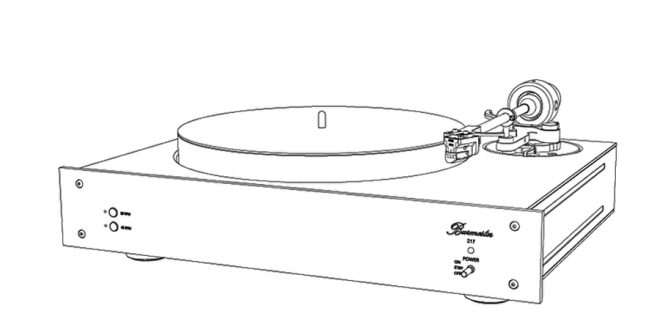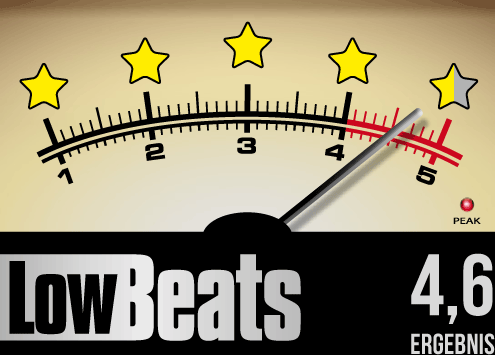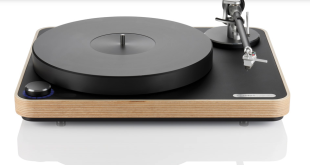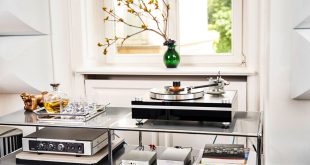The mighty Burmester 175 turntable made a big impression on us. Now there is a model from Berlin that is half as heavy and half as expensive, the Burmester 217. Visually, it shines like its big brother. But how much of its tonal authority remains?
There is no need to discuss at length which basic drive type the Burmester 217 belongs to. Lifting the massive shipping carton on one side is enough: clearly a heavyweight drive. But these categorizations are old and worn out anyway, full of exceptions and special cases and actually completely worthless. I’ve come across thin and austere-sounding phono heavyweights, lightweight turntables with first-class bass and outstanding dynamics anyway – see Rega or Vertere.
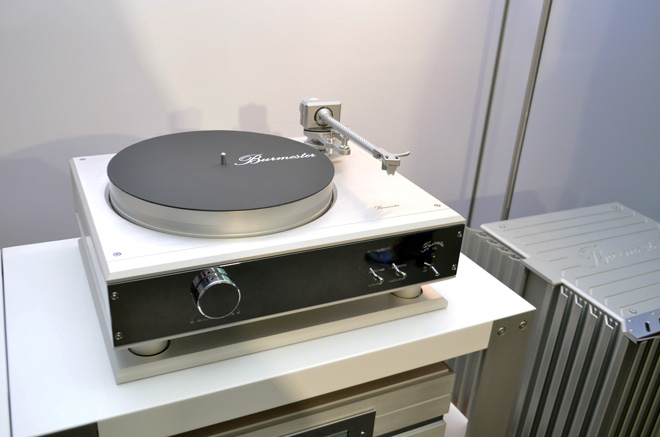
So if we expect fundamental calm and effortless, precise power delivery from the sound of the 217, it’s not because the player is expensive or weighs over 30 kilos. But because we know the people who designed and built it. Because we know which characteristics were particularly close to the heart of company founder Dieter Burmester, who continues to shape the sound culture of his brand posthumously: Present, powerful and dynamic, even at very un-audiophile high volumes, every device from Berlin has so far been able to play. With that special, electrifying kick that usually comes before live PAs. Anyone who has heard a Burmester CD player or the first record player 175 knows that these ideals can also be realized in source devices.
I had heard about the 175 for many months, it was only recently picked up again (I had actually hoped that the Berliners would just leave it casually with me in Kraichgau). Because it is easy to see that the two models are closely related in concept and design, I expected the 217 to be a worthy representative at a price that was no longer quite so exclusive. Not that I could afford it: 50% less still means 20,000 euros. But if a complete system from Burmester’s Top Line – to which the 217 formally belongs – can easily cost a six-figure sum, then that fits again.
Over the decades, Burmester has adapted perfectly to a somewhat better-off clientele. It is also important to understand that not every potential customer wants to spend months making subtle decisions about which combination of drive, arm and cartridge on which piece of furniture with which cable and so on will give the best return for the money invested. The manufacturer should take care of this in advance. So that the dealer can then simply ask “Do you also want the record player? – Yes/No”. If the answer is “yes”, then add the 217 to the invoice. Done.
The special features of the Burmester 217
Burmester makes the installation at home as easy as the purchase decision. The 217 arrives from Berlin in a sturdy double box on a one-way pallet, unless it is part of a larger consignment. It can be wheeled the last few meters relatively effortlessly on a handcart or carried by two adults. Once you’ve unstrapped the box and slit it open, it’s very quick: I’ve rarely needed so few steps for a player – no matter how expensive or cheap. First place the chassis on a stable table or sideboard and level it with the three fine thread feet. Then unscrew two locking screws (and keep them safe!), place the plate on top, check the horizontal alignment again and you’re ready to start wiring.
The arm is already perfectly adjusted, the pickup is already set up, so that the proud owner only has to remove the needle guard and find a suitable inauguration plate. The LP “Burmester Reference Check”, which was still included with the 175, does not seem to be included with the 217 – no great loss in view of four moderately exciting music tracks and some test signals that are not really necessary. A lithograph of the player based on the original design is also reserved for the top model. But who would really have hung them up if the original was standing next to them? As a student, I once had a beautifully photographed Linn Ekos pinned to the wall above my desk. But I didn’t have one then.
The mechanical heart of the Burmester 217 is a block of the finest Swiss aluminum. Although it makes no difference mechanically, the special and relatively expensive provenance of the light metal guarantees a particularly even structure and correspondingly perfect, color-homogeneous surfaces. The aluminum then spends several hours in a CNC machine, which carves out the various cavities and openings. In the knock test, however, the aluminum chassis behaves like a solid metal block, i.e. completely inert. Knocking harder eventually leads to “hearing” the surface on which the 217 is standing. In my listening room, a lowboard from Tabula Rasa, carpentered from solid German oak. Even with the strongest excitations, this only makes a brief “thud” – and even that can only be heard when the amplifier is turned way up. However, we learn from this that the 217, as acoustically dead as it may be, is only weakly decoupled from its background. The three felt-covered metal cylinders, which serve as feet, ensure a stable stand, but also transfer any life of their own to the base. Which ultimately means that it doesn’t matter what the Burmester player is working on. It’s a shame that Tabula Rasa, a Hessian craft business without any voodoo bells and whistles, closed down years ago.
In typical Burmester fashion, the front panel of the turntable is not simply highly polished, but actually chrome-plated. And then finely polished. I once watched a batch of front panels come back from the chrome plater at the factory in Berlin and each one was inspected under a special lamp as if it were a tablet from the Ark of the Covenant. The few operating elements – two touch buttons, a traditional toggle switch – and even the four Allen fastening screws are also chrome-plated. Perfection sometimes becomes an obsession here. Instead of the ten hi-fi commandments, however, the chrome front only bears a minimum of engravings and otherwise reflects its surroundings. This makes the player a treacherous photo motif, but allows it to blend in unexpectedly discreetly with the furnishings in everyday life.
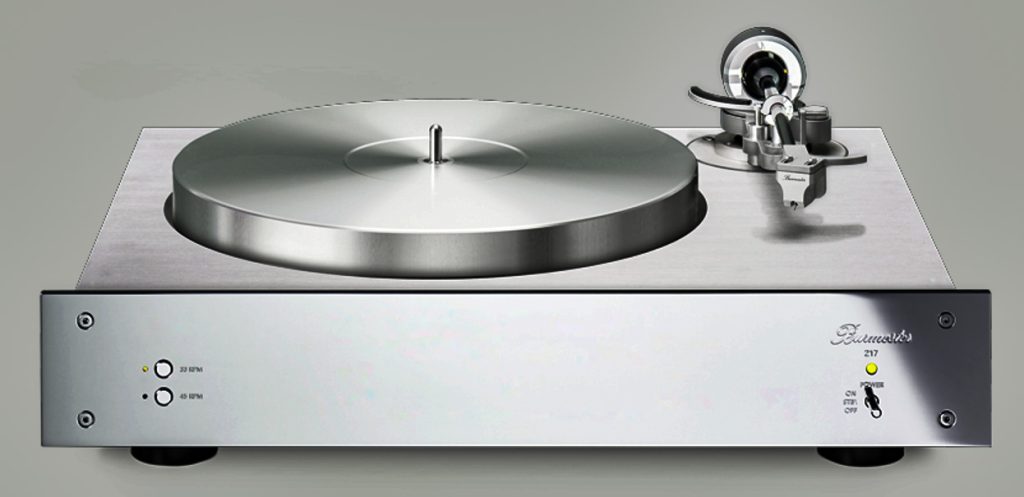
The toggle switch on the front right fulfills a dual function: when flipped down, it switches the player off completely. The middle position means standby. From there upwards, the switch works as a start/stop button, so it always springs back to the middle position and switches the drive on and off alternately. Two touch buttons on the left edge of the front panel determine the speed. There is nothing more to say about the operation of the drive.
But his technique is definitely worth a digression. Like the 175, the 217 is a belt-driven player. In keeping with the long-term stability typical of the brand, the designers have not only oversized the drive unit many times over, but have also isolated it almost hermetically from the environment. The user or buyer only gets to see the motors when he or she removes the platter and then unscrews a thick cover plate which, when fitted, only just lets the cone of the platter hub through. Under the cover plate, the cone widens into a small sub-platter, which is surrounded by four straps. Two of these belts are driven by a common motor – a classic synchronous motor, as used as a power source in the 175 and many other high-quality players. We remember that the 175 used not two, but four engines, but otherwise a very similar arrangement.
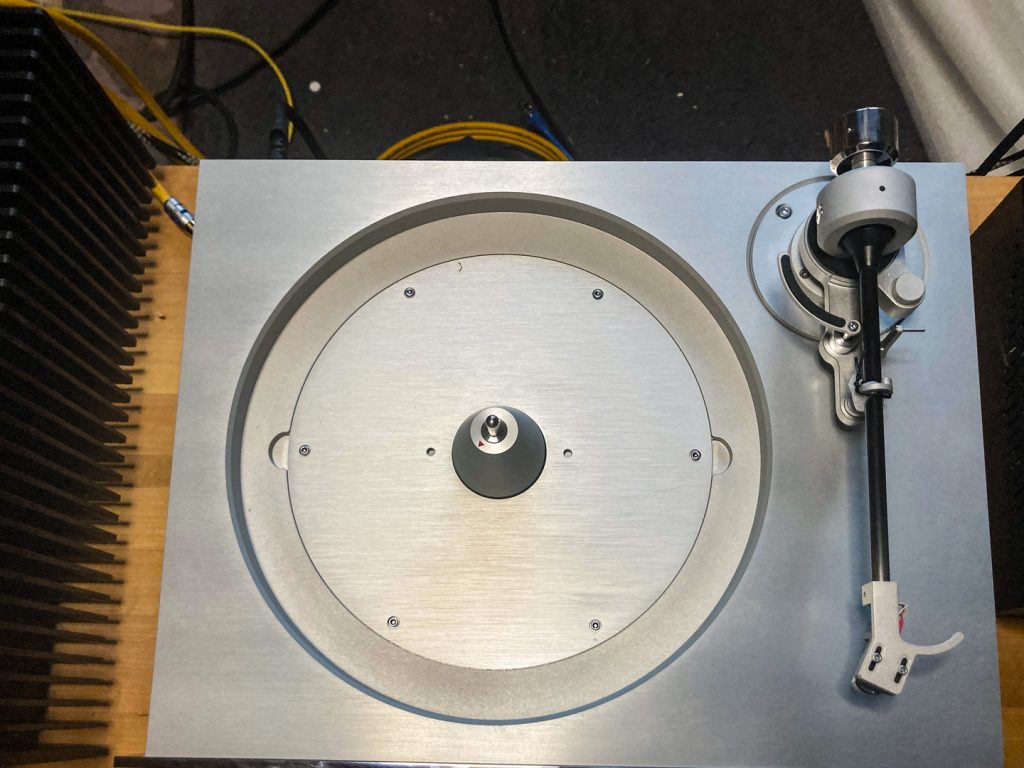
The 217 needs the four belts to move its eight-kilogram platter as smoothly and with as little wear as possible. From time to time, one also reads in such drive concepts that malfunctions should be eliminated by minimal eccentricities of the motors or fluctuating belt thickness, for example, if the number of potentially problematic components is increased. Burmester does not even venture to put forward this not uncontroversial thesis. Nor is a more even load on the platter bearing claimed. Of course, the belt tension of the two opposing motors balances each other out elegantly. But that itches the thumb-thick steel bearing axle about as much as an oak tree itches to know which side of its crown the squirrels are sitting on.
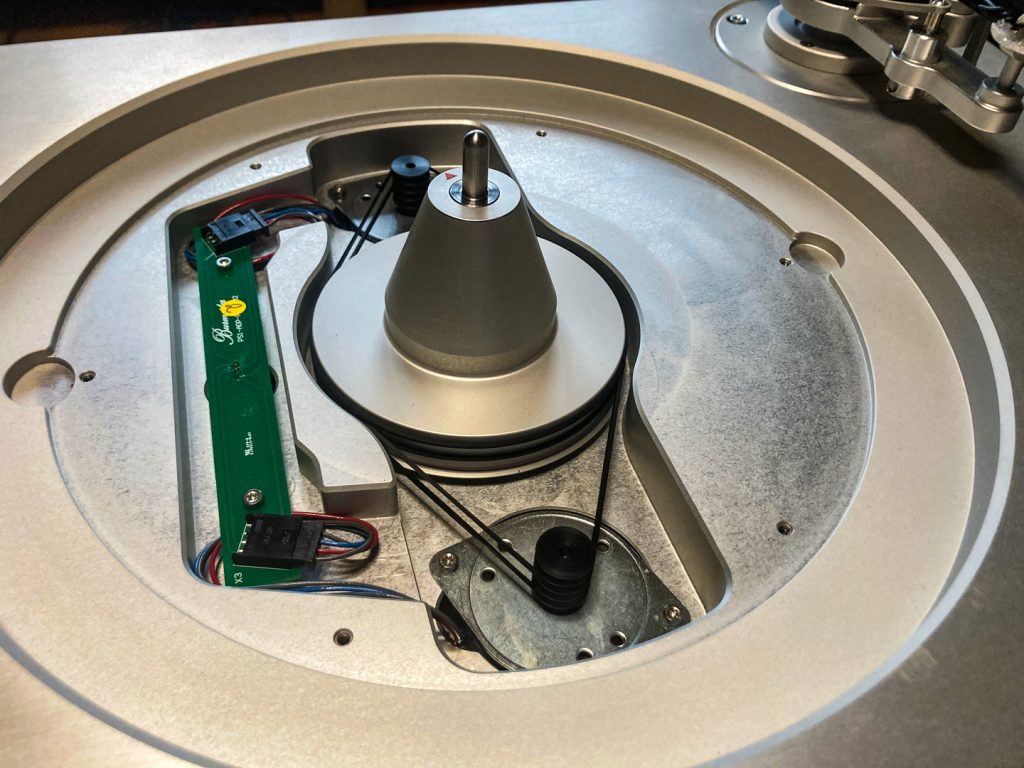
What is immediately obvious is that the encapsulated drive with its four flat belts should run almost forever without the need to replace the belt. Especially as the drive control system very carefully ramps up the motors over a period of 20 seconds at the start in order to protect the transmission rubbers as much as possible. However, the multi-engine, rather tightly coupled drive power may also have been chosen for sound reasons. With large players, there is the whole spectrum: tiny motors on long, thin strings that transmit hardly any more torque than is slowed down by the needle in the groove. Right up to power drives on the very short line, on the friction wheel or directly on the disk axle. Burmester tends to favor the second approach, which experience has shown to produce a dynamic, present sound – even if there are many other factors at play.
The platter itself looks like a thick, silky, glass-bead blasted aluminum disc, but its structure is somewhat more complex. Its underside is filled with a black, hard casting compound and the light metal is also calmed with inserted copper cylinders. This is reminiscent of the platter designs from Acoustic Signature, and that’s probably where the 217 is largely manufactured – it’s hard to imagine a better, more professional address than the company from near my old home in Göppingen.
The platter feels even heavier than its actual eight kilos. Together with the smooth edge, this results in a small problem during assembly: Actually, you just have to place the round part on the bearing cone, with two printed arrows indicating the ideal alignment of the two parts to each other. However, as the platter is sunk into the upper deck by a few centimeters and there is only about a millimeter of air on the outside, you can only grip the heavy disc from the side, where the friction between the skin and the silky edge of the plate alone is supposed to hold all the weight. This doesn’t work really well, or not at all, depending on the hand force. Despite my power grip, I was ultimately happy when I had set the platter down without an accident. The practical suction lifter that the Berliners include with the large 175 with manhole-cover-heavy platter should therefore also have a regular place in the 217 box. Otherwise you just buy one for 20 euros.
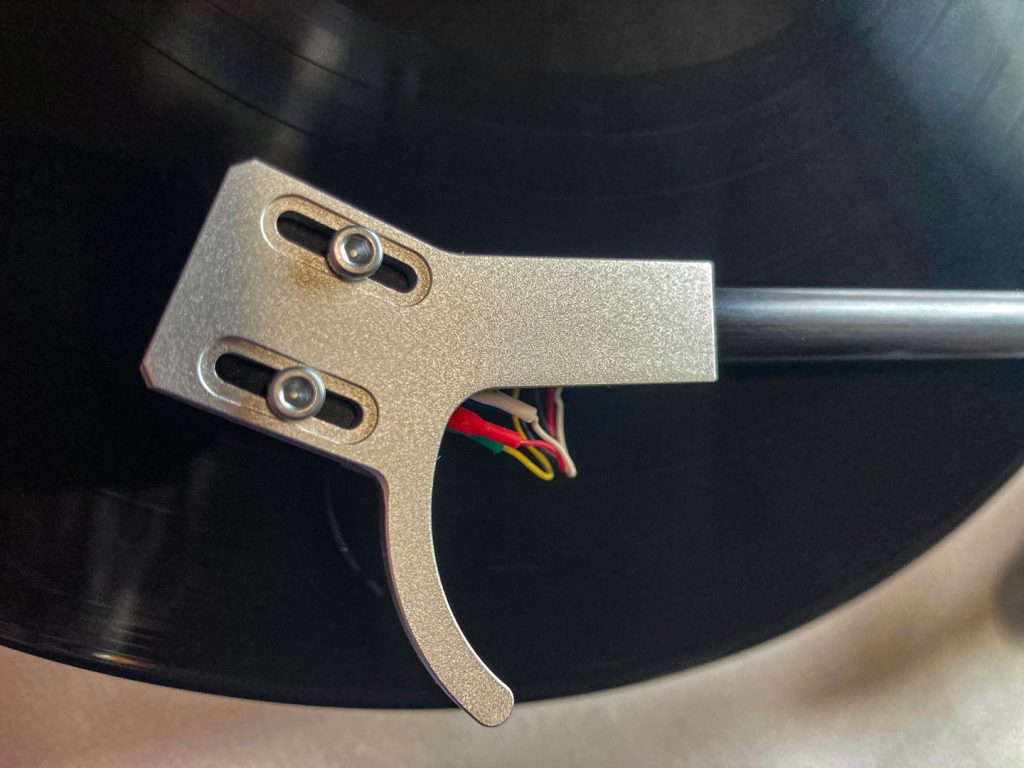
The ergonomics of the tonearm seem to be a matter of taste: I would prefer it if the bracket of the headshell were not curved backwards, but straight as a die. Then the arm could also be lifted from the front with the thumb and without a lift, without slipping backwards. If you approach the handle from behind with your index finger, it works better. On the other hand: the lift works with outstanding precision, quickly, but not too quickly. The tonearm is a classic nine-inch design with an extremely solid bearing ring for the vertical bearings and a barely less stable, height-adjustable shaft that houses the horizontal bearings. The quality of these bearings is palpable, a combination of vanishingly low resistance and absolute freedom of play that even professionally pampered fingertips rarely encounter. What swivels so smoothly is a slim arm tube made of unidirectionally laid carbon fiber and epoxy resin, finished at the rear with a beautiful, spindle-shaped aluminum bearing block and at the front with an aluminum headshell milled from solid material. The 217 boom looks almost graceful next to the even more massive arm of the 175. In terms of strength, low resonance and bearing quality, both are easily world class.
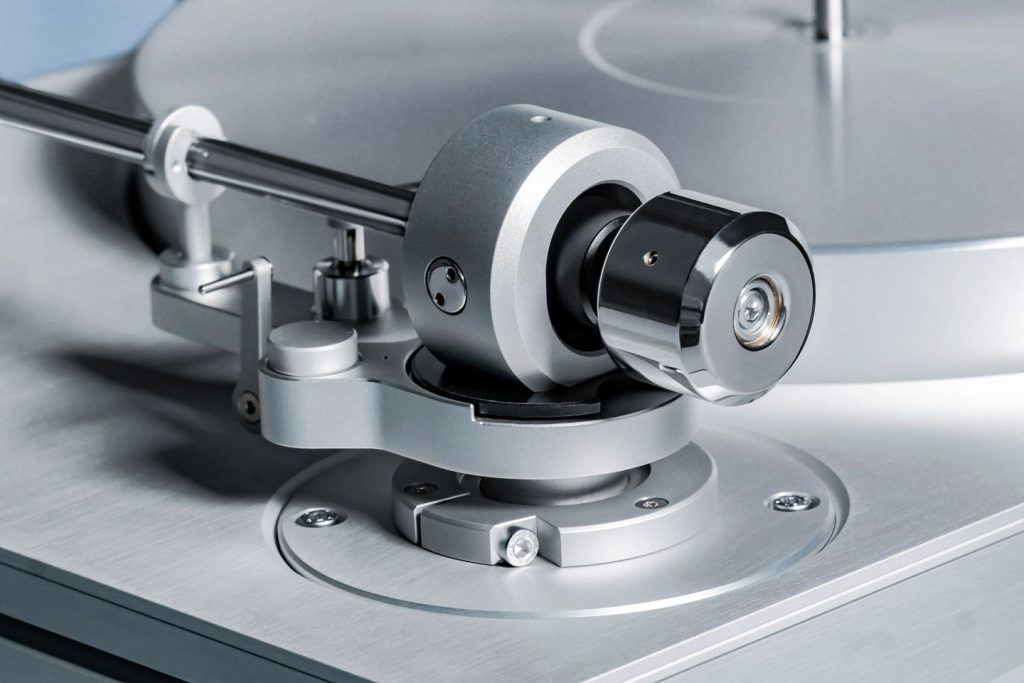
The Burmester customer does not have to worry about the right pickup: The 217 is only available with a pre-assembled and pre-adjusted Burmester system. Unlike the 175, which can be ordered with or without, the 217 does not appear differently in the price list. However, this should not be overestimated: Thanks to its classic half-inch headshell and medium effective mass, the 217 is of course compatible with practically every pickup in the hi-fi universe. So if a music lover or record collector has fallen in love with a very special pickup – perhaps a Koetsu in a gemstone case, a large Lyra or one of Ortofon’s exotic “Exclusives” – the dealer can easily make it happen. There are guaranteed to be other buyers for the redundant Burmester MC. After all, it is a highly charming system in its own right.
It maintains contact with the groove by means of a Shibata diamond, whose special cut not only confidently follows the narrowest high-frequency modulations far beyond the audible range, but also accomplishes this feat with remarkably low background noise. This stone is mounted on a needle carrier made of matt translucent sapphire, which offers very high strength with minimal weight. The Burmester documentation is silent on technical parameters. So what the coils are made of, what resistance they have and what recommended termination value results from this – is not stated anywhere. The manual does not even reveal the recommended contact force. Instead, it explains verbosely that we don’t need to worry about this: “The support weight (10) of the tonearm is already set for the supplied Burmester MC pickup system and requires no adjustment.” The Berliners are taking plug and play a little too far.
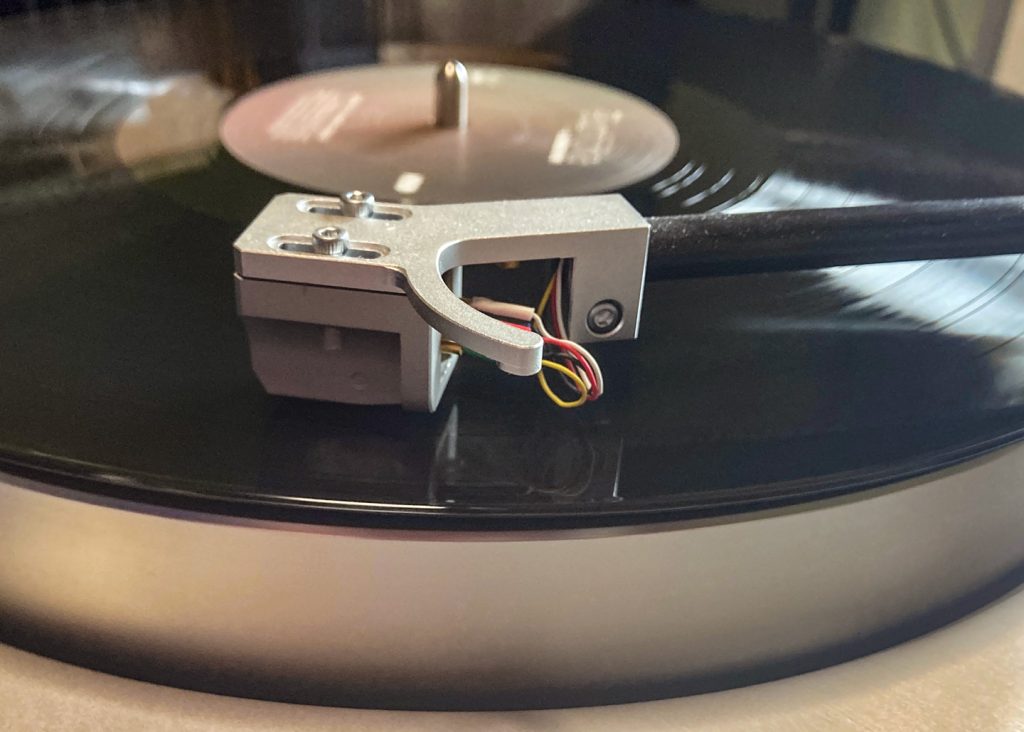
Although the sentence itself is correct: everything, absolutely everything on the 217 is not just somehow preset at the factory, but actually perfectly preset. And secured in such a way that it does not change unnoticed or insidiously. Tone arm height, i.e. vertical scanning angle: to the point. Contact force: 23mN. This corresponds exactly to the recommended value for the Ortofon Quintet Black S, with which the Burmester system is closely related internally. The anti-skating was also perfect ex works. And the azimuth, which is quite critical with the Shibata needle cut? Someone seems to have taken care of it. Otherwise, the soft, relaxed high frequencies that the Burmester produced in the listening room would not have been possible, because a Shibata stone that is only slightly tilted to the side quickly starts to poison unmistakably with more difficult slices.
Hearing test
In the absence of a Burmester phono preamp, we connected the 217 to the Cayin CS-6PH, which works wonderfully accurately and sounds as smooth and friendly as the input signal allows. And as much as I don’t believe in the fundamental superiority of very expensive players over only moderately expensive ones, the 217 made a statement – even against my highly esteemed high-flyers from more affordable price regions. A Well Tempered Simplex or – a little more expensive – a Vertere DG-1S plays so well on its own that, in the deepest conviction, one imagines oneself to be right on the magical threshold beyond which everything only gets more expensive, but not significantly better. Oh no – it can’t get any better! Any bet!
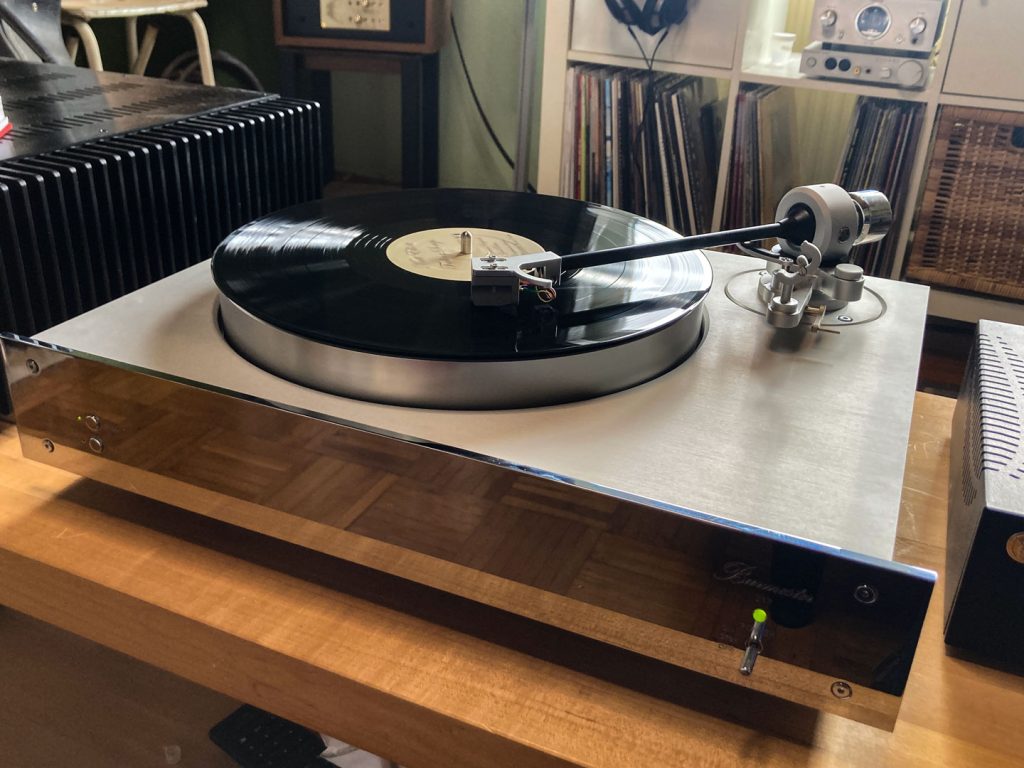
And then the Berlin heavyweight turntable plays a completely normal rock record, Pedro The Lion’s album “Havasu”, with its unusually complex harmony sequences and David Bazan’s autobiographical lyrics, a kind of author’s indie rock. “First Drum Set” takes an almost irritatingly cheerful turn in the second half of the song, and the Burmester pulls away from the other players here at the latest: the beautifully sonorous recorded drums have even more weight here and Impact, the guitar amps are even more widely distributed in the listening room and emit even fuller, warmer waves of wonderful church music chords from their position.
The sound of the 217 is aimed at the gut, at uncomplicated, direct emotion. Its focus is on a punchy and powerful bass and fundamental range. And he can afford this power because he depicts the music on such an expansive scale that it opens up widely and transparently despite its fullness and density. Even my Linn LP12, which is recognized for its powerful bass and format, falls behind, even if I temporarily implant the Burmester system into it. Which is not easy, by the way, because it weighs a massive 15 grams due to its milled aluminum body. The Burmester arm is prepared for this with a correspondingly massive counterweight, but in return requires a lighter (optional) exchange weight for normally heavy pickups. Burmester could also include this, perhaps accompanied by a nice tool kit with the necessary Allen keys in Made-in-Germany quality, a proper digital tonearm scale, perhaps even a well thought-out overhang template. I would even do without the obligatory pointless cloth gloves and chrome polish.
But OK, I’m a nerd and not part of the target group. Which is not to say that I really missed tinkering with the Burmester. The Dreher plays so heartily and at the same time finely, so balanced and dynamic, that I love to spend my time in front of it without having to plan the next DIY project. This is how “Failing Songs” by Matt Elliott ended up on the plate, where the brilliant singer, guitarist and songwriter apparently celebrates his sad chanson folk with a small band of upright people in empty industrial halls. A fire of resignation and leftover “Krieg den Palästen” flyers burns in the middle – and you’re already sitting in the circle listening to the echoing guitars, the drunken choir and the obligatory death mandolin. With the 217, this sounds surprisingly unadorned and documentary again, with metallic reflections and an uncomfortable coolness lurking outside the glow of light. Which puts the juicy power of appropriately recorded rock records in an even more positive light: Because it is recognizably not the product of a basic sound tilted here or there, but results directly from the unusually wide tonal and dynamic range of this player.
Conclusion Burmester 217
The 217 has clearly inherited its great expressiveness from its big brother 175. He undoubtedly plays with even more power, but has generously passed on his essential qualities. This also includes the fascinating ability to leave behind the played medium with its typical weaknesses and recognition features. The 217 is right in front of me on the lowboard. I see the plate turning, perhaps even making slight waves at the edge, and I see the needle gliding on it. But the music sounds as if it came from somewhere else, from a superior medium, still analog, but better than analog records. Some other players can do that too, but not many. And the 217 makes it easy in an exemplary way – as long as the price is not an obstacle.
Rating
Sound QualityUsabilityBuild QualitySummary |
| The rating always refers to the respective price category. |
| | Balanced, absolutely superior and clean sound |
| | Set up and ready to play in minutes |
| | Luxurious finish |
| | No hood, few accessories, less informative manual |
Distribution:
Burmester Audiosysteme GmbH
Wilhelm-Kabus-Str. 47
10829 Berlin
www.burmester.de
Price (manufacturer’s recommendation):
Burmester 217: 20,000 euros
More about Burmester:
Test Burmester 175: Turntable in a league of its own
Test floorstanding loudspeaker Burmester B38: the arrow into our heart
Test Burmester B18 – luxury floorstanding speaker with bass extension
Test Burmester BA 31 – Floorstanding speaker with dipole tweeter
Test Porsche Panamera 4S with Burmester and Auro-3D
Test Mercedes E 320 d with Burmester 3d sound
Mercedes Maybach Pullman with Burmester 3D
Technical data
| Burmester 217 | |
|---|---|
| Concept: | Complete turntable |
| Category: | Heavyweight turntable with belt drive |
| Built-in TA: | MC with Shibata cut |
| Built-in phono stage: | no |
| Weight: | 31.5 kg |
| Dimensions (W x H x D): | 48.1 x 16.5 x 28.3 cm |
| All technical data | |



